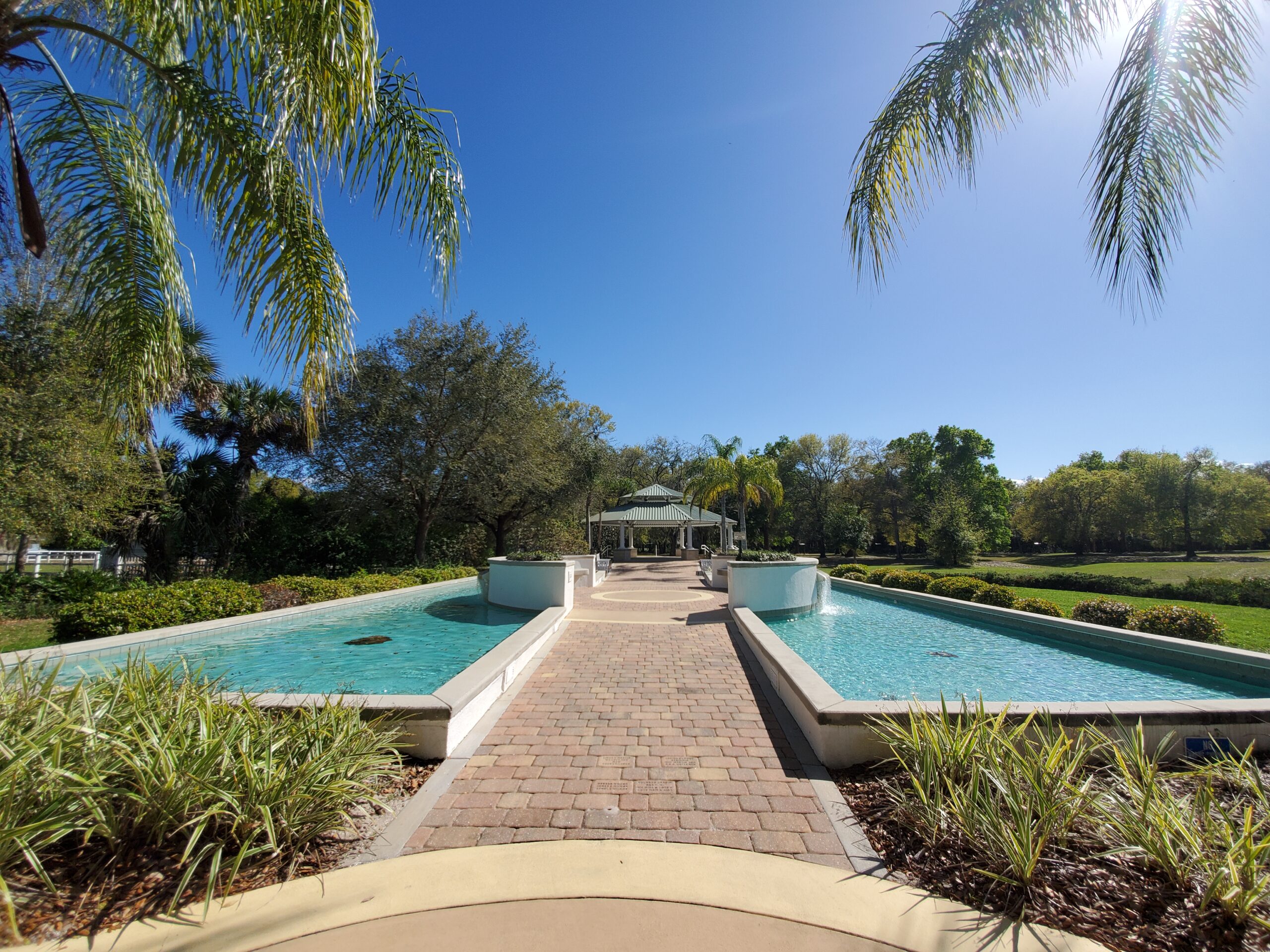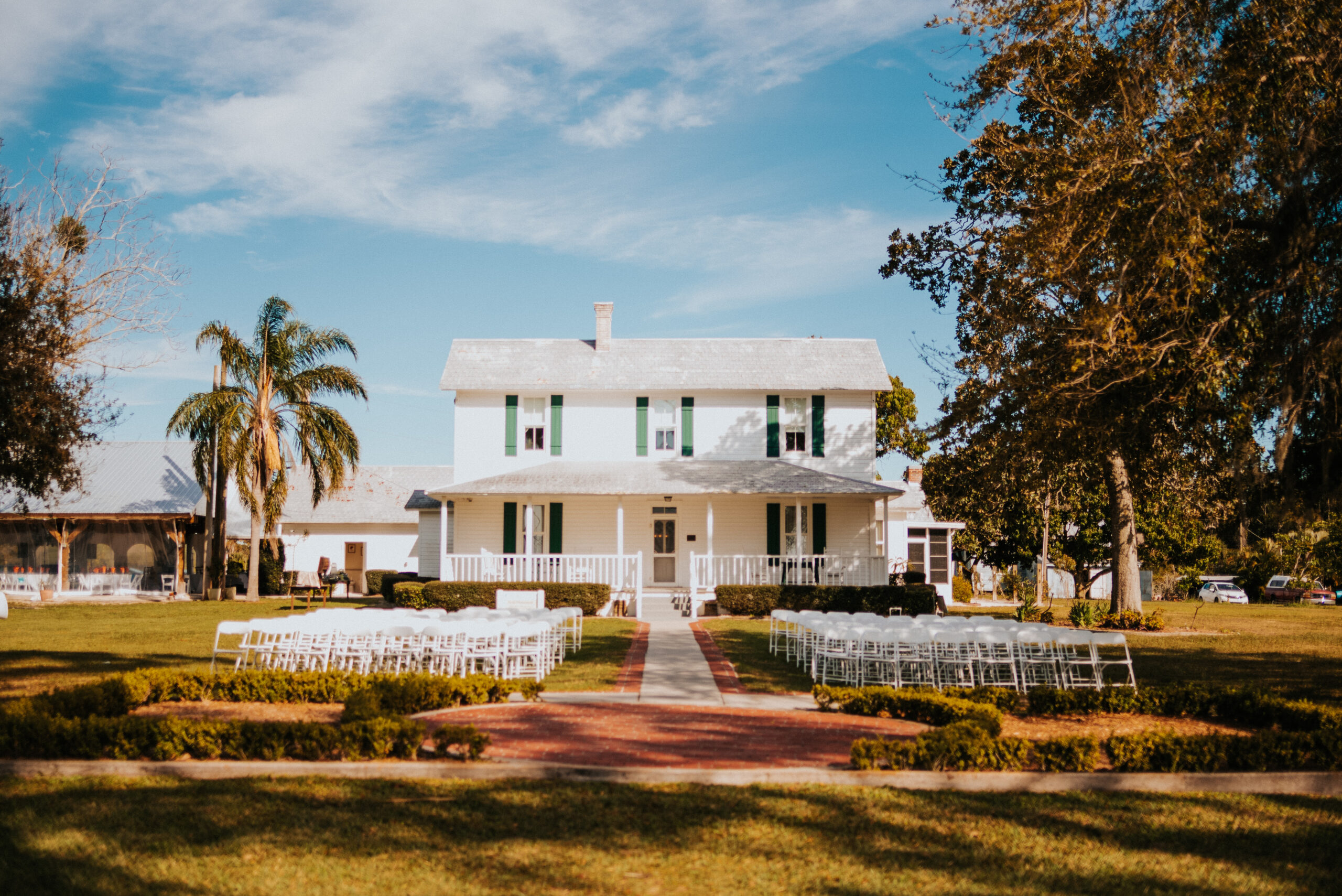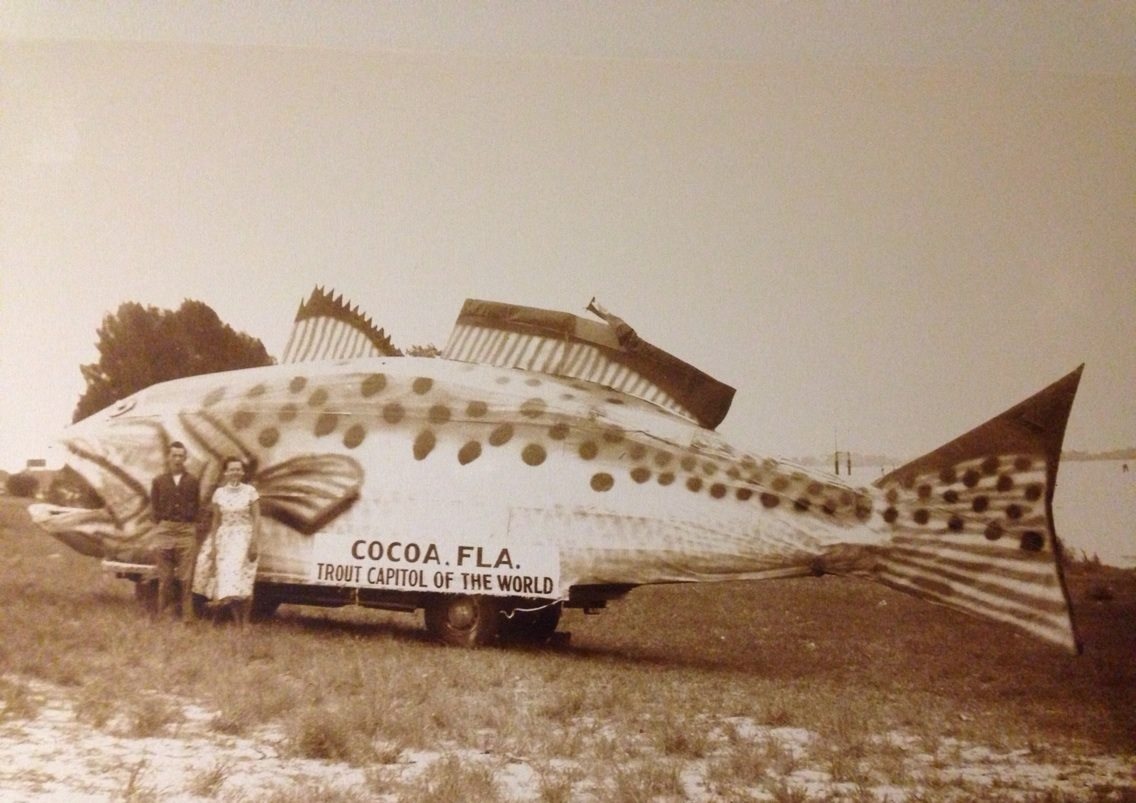Florida’s Space Coast is home to some incredible moments in Black History, from notable writer Zora Neale Hurston living in Eau Gallie and the Highway Men painting landscapes along the Indian River, to Harry T. and Harriette V. Moore’s tireless work and even the inventor of the automotive signal light. Some of these stories and locations are part of the Civil Rights Trail and the Florida Black Heritage Trail. Journey through history and learn more about how Brevard County came to be.
Persons of Note
- Harry T. and Harriette V. Moore
- Harry Tyson Moore (November 16, 1905 – December 25, 1951) was a local teacher, founder of the first branch of the National Association for the Advancement of Colored People (NAACP) in Brevard County and president of the state chapter of the NAACP. He worked for equal pay for Black teachers in public schools, worked towards voter equality measures, and worked to overturn the wrongful convictions of the Groveland Case. Harriette Vyda Simms Moore (June 19, 1902 – January 3, 1952) was also an educator like her husband and worked alongside him for Civil Rights. A bomb was planted under their home in Mims on Christmas Eve, 1951 resulting in their deaths. This was a tragic and impactful assassination in the Civil Rights Movement. Their homesite was named a Florida Heritage Landmark and was added to the Civil Rights Trail. Jackie Robinson, the first African-American Baseball player, held a memorial service with 3,000 mourners in New York City, which was followed by a larger service held by the NAACP in Madison Square Garden with 15,000 people, including Langston Hughes who recited a poem he wrote in their honor.
- Harry T. & Harriette V. Moore Cultural Complex – Mims, part of the Civil Rights Trail
- Harry Tyson Moore monument – Titusville
- Medal of Honor recipient Melvin Morris
- Sergeant First Class Melvin Morris and his family moved to Brevard County in December 1990. During the Vietnam War, then Staff Sergeant Morris was serving as Commander of a Strike Force when he learned that a fellow team commander had been killed near an enemy bunker. He reorganized his men to recover the team commander’s body. The hostile force concentrated its fire on Staff Sergeant Morris’ three-man element, and both men accompanying him were wounded. After assisting the two wounded men back to his forces’ lines, Staff Sergeant Morris charged forward into enemy fire. Staff Sergeant Morris destroyed the positions with hand grenades and continued his assault, eliminating four bunkers. Staff Sergeant Morris was wounded three times during the enemy attack, but succeeded in retrieving his comrade and returning to friendly lines. On March 18, 2014, the President of the United States of America, at White House ceremonies in the name of Congress, presented the Medal of Honor to Sergeant First Class Morris for acts of gallantry above and beyond the call of duty.
- Visit the historical marker and statue in Cocoa
- For more information: US Army biography page, US Department of Defense article, Congressional Medal of Honor Society article
- Rosa Lee Jones: The Mother of Cocoa
- Rosa Lee Jones (February 26, 1907 – December 2, 2008)moved to Brevard County at age 19 with her new husband Osborne Herman Jones in 1925 when Cocoa’s population was only 1,800 residents along dirt roads and orange groves. She studied at Brevard Community College and became a kindergarten teacher. In 1930, Rosa also became the first Black Girl Scout leader in Cocoa. She befriended Harry T. and Harriette V. Moore and worked with him in the All-Black Florida State Teacher’s Association to sue for equal pay with help from Thurgood Marshall. In the 1960s, Rosa and Osborne opened the Rosebud Kindergarten and Child Care Center, where “black children could receive a first-rate education, similar to that offered at a nearby school for white children.” Her school was integrated, accepting any child regardless of their background, many of whom went on to be notable figures in local government and education. Rosa Lee Jones was the first African American woman to own and operate a licensed kindergarten and daycare center in Cocoa. She was also a well-known figure in local media as one of the county’s first female broadcasters. She had a community news segment called “The Gab Bag” every Sunday from 1965 to 1985 on WKKO-AM’s Open House morning program. She also contributed regularly to local newspapers. A street in Cocoa has since been named for her, as well as a mural on the intersection of Brevard Ave and Rosal L. Jones Drive in Cocoa Village.
- Articles about the mural: article 1, article 2
- About Rosa Lee Jones, the “Mother of Cocoa”
- The Legacy of Dennis Sawyer
- Edwin Dennis Sawyer (1874-1964) was born in the Bahamas, the second child of freed slave Alfred Sawyer. He moved to Cocoa in 1898 and then to Merritt Island with his wife where they raised five children. In 1902, Dennis Sawyer applied for U.S. citizenship. He organized and helped build Mt. Olive AME Church in 1908 on Merritt Island. He owned a 2-story building known as “Sawyer’s Hall,” which had space for community and Masonic lodge meetings, a small store, and rented living quarters. He helped establish one of the first African American schools on Merritt Island. In 1931, Sawyer arranged for the construction of a 2-room schoolhouse that was later known as Merritt Junior High and held the distinction of exhibiting at the Florida Hall at the 1933 World’s Fair in Chicago. Notable local educator and administrator Ralph Williams Jr (whom Ralph Williams Elementary is named for) attended the school. He also captained the tug Mystic, which pulled fruit barges to Cocoa for loading onto Florida East Coast Railway cars, and skippered a trade boat that S.F. Travis ran down to Jupiter. The S.F. Travis and Company Hardware Store still runs in Cocoa Village to this day.
- Visit the historical marker – Merritt Island
- Dennis Sawyer Memorial Park and Cemetery (1956) – Merritt Island
- The Highwaymen & R.L. Lewis
- The Florida Highwaymen are a group of 26 African American landscape artists in Florida believed to have created a body of work over 200,000 paintings. They painted landscapes and made a living selling them door-to-door and from their cars along A1A and US 1 from the mid-1950’s through the 1980s, which is how they got their name. All 26 Florida Highwaymen were inducted into the Florida Artists Hall of Fame in 2004. Robert Lewis, one of the Highwaymen, is a local art educator who has done talks around the country. One of his paintings is on display at the Brevard Museum of History and Natural Sciences. The museum also held an exhibition of Highwaymen art in 2018. Other pieces may be found around the state at the Orlando Museum of Art, A.E. Backus Museum & Gallery in Ft Pierce, Vero Beach Art Museum, and Sarasota City Hall.
- https://www.floridahighwaymenpaintings.com/highwaymen/rl-lewis-jr/
- https://www.floridahighwaymenpaintings.com/
- Zora Neale Hurston
- https://collinsmuseumcocoa.org/hurston
- Hurston first moved to Eau Gallie in 1929, where she was very productive. Here she wrote her most important book of African American folklore Mules and Men (published in 1935), documented research she had done in Florida and New Orleans to fill an entire issue of the Journal of American Folklore, and made significant progress on her theatrical pieces.
- Hurston came back to Eau Gallie in 1951, moving into the same cottage where she had lived previously. Between 1951 and 1956, Hurston worked on her manuscript Herod the Great; covered the murder trial of Ruby McCollum, a Black woman who killed her white abuser; and wrote an editorial for the Orlando Sentinel arguing against the Brown v. Board of Education decision.
- She spoke of “the one spot on earth [that] feels like home to me” where she was “the happiest I’ve been in the last ten years” and where she wanted to “build a comfortable little new house” to live out the rest of her life.
- photo in her Eau Gallie cottage
- While working as a librarian at the Technical Library for Pan American World Airways on Patrick Air Force Base, Hurston was unable to purchase her much loved Eau Gallie cottage, so she moved to an efficiency apartment in Cocoa. https://myfloridahistory.org/frontiers/article/2
- But the one spot is a cottage in Eau Gallie at Guava Avenue and Fifth Street (now Aurora Road), blocks from the Indian River. Hurston lived in that cottage twice, in 1929 and again in 1951. She also lived in an efficiency apartment in Cocoa Beach and rented a mobile home on Merritt Island while working at the technical library for Pan American World Airways at Patrick Air Force Base.
- Hurston staged several theatrical performances in Brevard, including one at Melbourne High, which was the school’s first integrated event.
- In 1956, writer, folklorist, and anthropologist Zora Neale Hurston lived at 516 ½ King Street in Cocoa.
- https://collinsmuseumcocoa.org/hurston
- Melbourne Founders
- Captain Peter Wright and his brother Richard (Dick) Wright, former slaves, arrived in Florida around 1867. Peter was a locally renowned boatman and guide, delivering mail by boat becoming Melbourne’s first mailman. Peter brought mail up and down the river in his boat Mist from Titusville (then Sand Point) to Melbourne, while Dick delivered in his boat Nelly from New Smyrna to Titusville via Mosquito Lagoon and Haulover Canal. In 1885, Peter moved from Melbourne to Rockledge to be a fruit grower and owned and operated a livery stable in Cocoa from 1906-1915.
- Peter Wright Homestead Site, Crane Creek Melbourne: Wright received his homestead patent in 1874 for 78.05 acres between the railroad and Indian River, south of Hibiscus Ave. and north of Prospect St. His first homestead was built at the top of Trysting Steps at the north end of Front St. His second property was built on the south side of Crane Creek where the Roy Couch house now stands.
- Wright Brothers (his headstone reads William W. Brothers) sailed to Crane Creek around 1880 with his wife Mary Silas Brothers, who was trained as a midwife. He was deeded 7.5 acres of property and worked on citrus and pineapple groves. Later, he opened a grocery store on Lipscomb Street.
- The original Brothers’ knotty pine and cypress cottage was relocated from its original site and donated to Allen Chapel across the street.
- Brothers Park, Melbourne: Brothers Park began as the site of the school for Black Children of South Melbourne, built between 1920-1921 by Brevard County on land donated by John S. Stone, a pioneer landowner. The school burned down in 1953 and was turned into a community park and was named after Wright Brothers.
- Balaam and Salina Allen
- The Allens arrived at Crane Creek in the late 1880s and were good friends with Peter Wright and Wright Brothers. Balaam was also a freed slave.
- Wright and Mary Silas Brothers, Balaam and Salina Allen, and Carie and Robert Lipscomb established the first Black church in Melbourne, the Greater Allen AME Chapel.
- More information on the Founders
- Captain Peter Wright and his brother Richard (Dick) Wright, former slaves, arrived in Florida around 1867. Peter was a locally renowned boatman and guide, delivering mail by boat becoming Melbourne’s first mailman. Peter brought mail up and down the river in his boat Mist from Titusville (then Sand Point) to Melbourne, while Dick delivered in his boat Nelly from New Smyrna to Titusville via Mosquito Lagoon and Haulover Canal. In 1885, Peter moved from Melbourne to Rockledge to be a fruit grower and owned and operated a livery stable in Cocoa from 1906-1915.
Museums with Displays
- Valiant Air Command Warbird Museum (Tuskegee Airmen display) – Titusville
- North Brevard Historical Museum – Titusville
- Veterans Memorial Center (small mention of Tuskegee Airmen) – Merritt Island
- Leon and Jewel Collins Museum of African American History and Culture at the Harry T. Moore Center – Cocoa
- Harry T. Moore Center – formerly Monroe High School, the 1st all African American school in Cocoa and only African American high school still standing in Brevard (no longer used as a school in 1954)
- Website
Schools
- Titusville Negro School historic marker – Titusville
- The Clifton Colored School historical marker – North Merritt Island
- Marker is on Courtenay Parkway North (State Road 3), on the left when traveling south. North of Haulover Canal, south of Beacon 42 boat launch
- https://nbbd.com/godo/history/CliftonSchool/
- Viera Voice article
- Little Red Schoolhouse
- Built in Melbourne in 1883, the Little Red Schoolhouse taught white children in the morning and black children in the afternoon. A new school building was built in Downtown Melbourne in 1916, leaving this one empty until the 1940s when it was moved to the grounds of Melbourne Elementary and High Schools. In 190 it was relocated to the Botanical Garden at Florida Institute of Technology.
- More Information: Florida Tech
Historic Black Churches/Cemeteries
- Greater St. James Missionary Baptist Church of Mims (1894) – Mims
- LaGrange Church and Cemetery (segregated burial grounds, final resting place of Harry T. & Harriette V. Moore) (call North Brevard Funeral Home for assistance if needed: 321-269-9222) – Titusville
- Davis Memorial Cemetery (1956) – Titusville
- Dennis Sawyer Memorial Park and Cemetery (1956) – Merritt Island
- Bethel African Methodist Episcopal Church of Merritt Island & Community Cemetery (1892) – Merritt Island
- Mt. Olive AME Church (See Dennis Sawyer) – Merritt Island
- Hilltop Cemetery (1880’s) – Cocoa
- Mt. Moriah AME Church (1890s, original destroyed in fire in 1922, current version built in 1923)- Cocoa, Part of The Florida Black Heritage Trail
- Allen Chapel A.M.E. Church – Melbourne
- Line Street Cemetery – Melbourne
- Piney Grove Cemetery (Early 1900’s) – Exact location unknown, Malabar
Other
- The Tuskegee Airmen Of World War II marker in Veterans Memorial Park, next to Space Walk of Fame, Titusville
- The Richard E. Stone Historic District: 121-304 Stone Street, Cocoa.
- Richard E. Stone’s many gifts to Brevard include establishing the first recreational center building and helping organize the Cocoa-Rockledge Civil League. Richard Stone, the son of the owner of Melbourne’s first grocery store and stable, established Brevard County’s first black professional baseball team (the Cocoa Black Indians) and its first black funeral home. Stone Funeral Home is one of Brevard’s oldest businesses and is still in operation today. He also helped found the first civic organization, then known as Liberty League, Inc., and invented and patented an automobile directional signal light, and patented the trocar, a surgical instrument used in embalming.
- Campbell Park – Melbourne
- Many acres in this area were originally owned by Peter Wright a black man and one of the first settlers of this area.
- Kennedy Space Center and Visitors Complex & American Space Museum/Space Walk of Fame for Black Astronauts
- Brevard Museum of History & Natural Science – one small Highwaymen painting on display, has hosted a Highwaymen event in 2018, info poster about the Moores in the schoolhouse replica display




